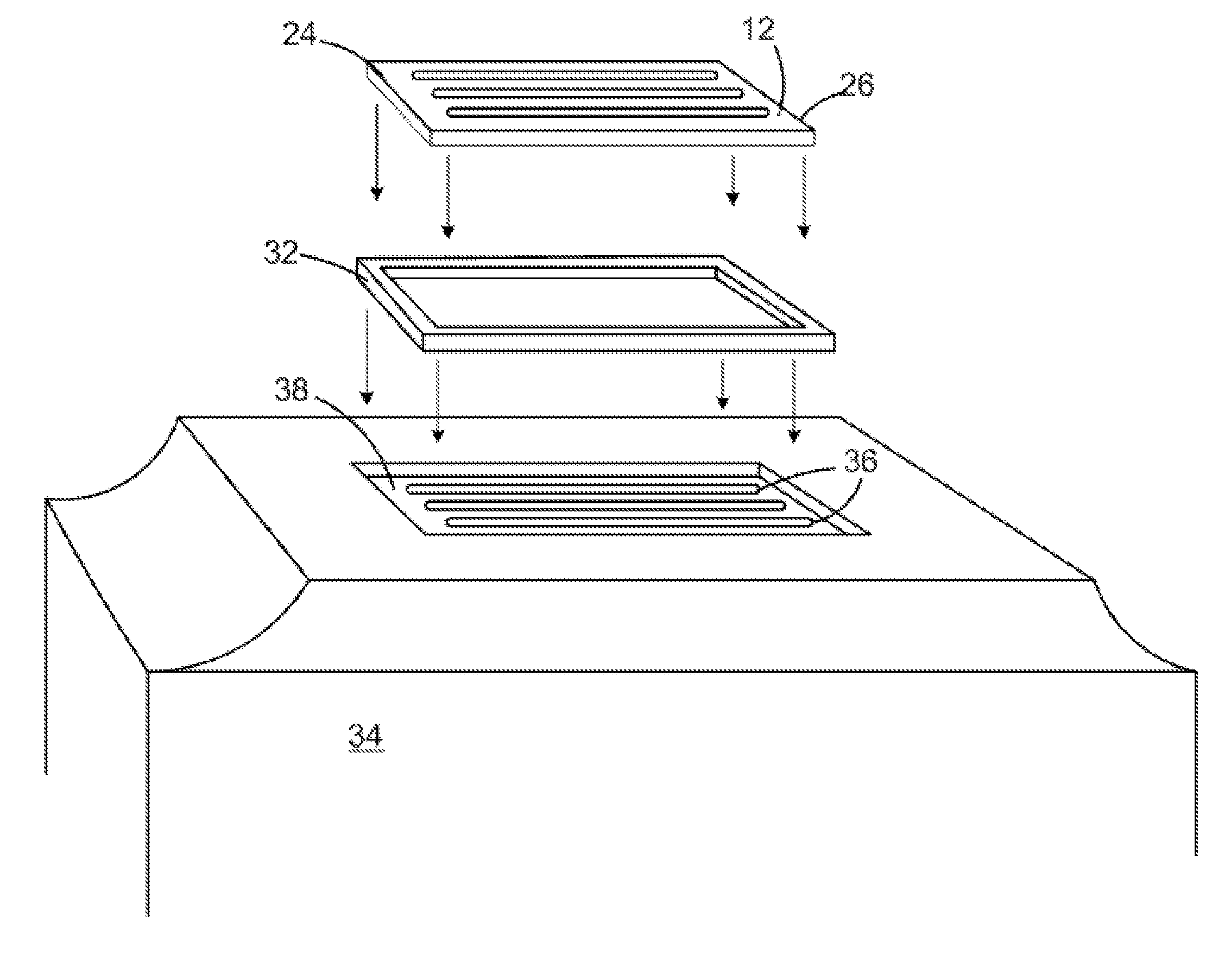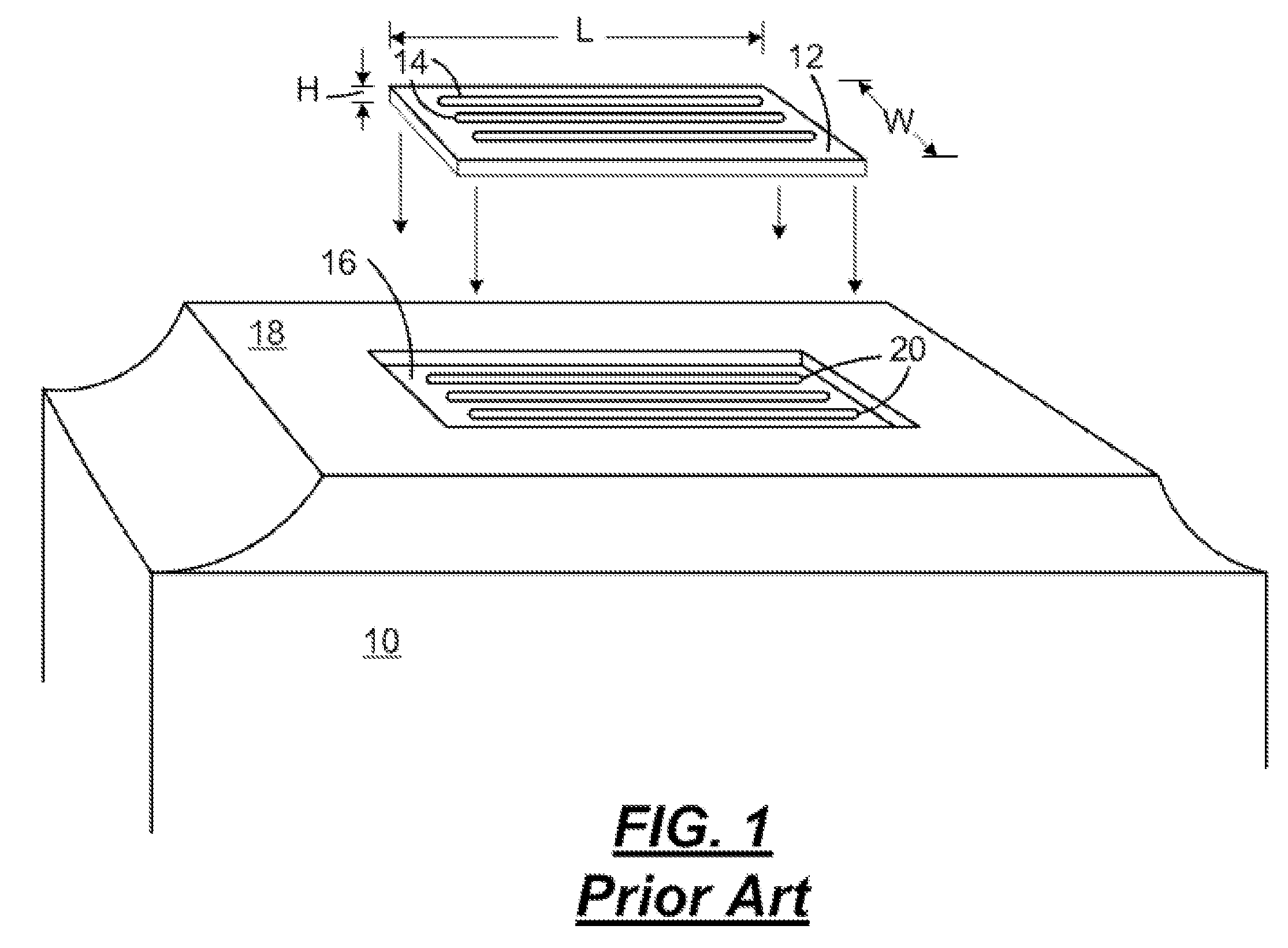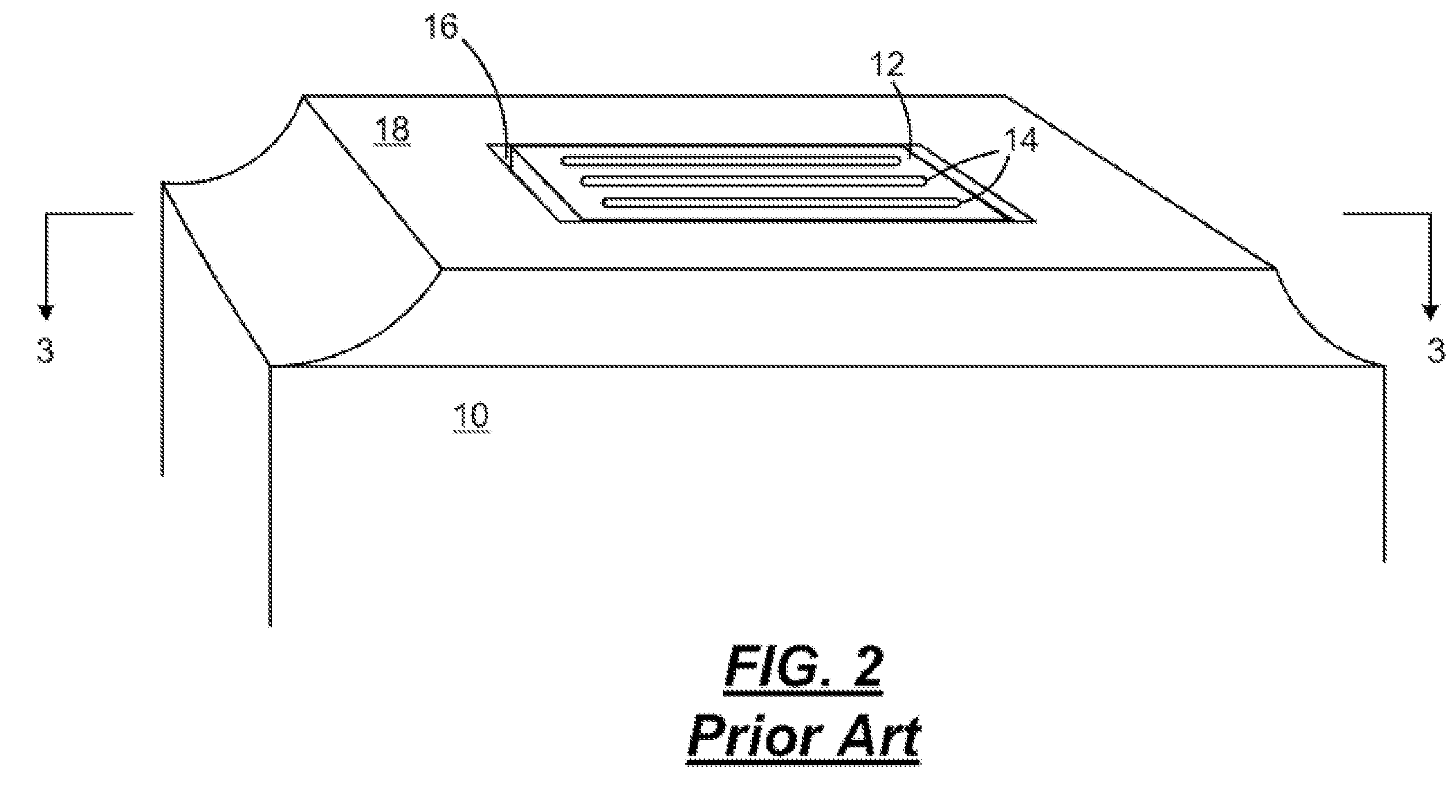Methods and apparatus for improved ejection head planarity and reduced ejection head damage
a technology of ejection head and planarity, applied in printing and other directions, can solve the problems of chip cracking, product yield loss, and increase so as to minimize chip cracking and warpage, the chip size increases, and the difficulty of handling chips without damage or breakage increases.
- Summary
- Abstract
- Description
- Claims
- Application Information
AI Technical Summary
Benefits of technology
Problems solved by technology
Method used
Image
Examples
example 1
[0033]A comparison of the amount of chip bowing for a prior art body, a body having a compliant chip pocket and a body containing a reinforcing member is given in the following table. The amount of bowing in the prior art chip pocket (FIGS. 1-4) is used as a baseline for comparing other chip pocket designs. In the table, the maximum distance between of the centerlines 28 and 30 is used as the maximum substrate bowing in the table for each of the indicated chip pocket designs at a 60° temperature difference applied for adhesive curing. A steel reinforcing member 32 is used to reinforce the chip pocket for the rigid chip pocket design.
TABLE 1Max. BowingChip Pocket Design(microns)% decrease / increasePrior art chip pocket (FIGS. 1-4)10BaselineCompliant chip pocket1330% increaseRigid chip pocket (FIGS. 5-8)640% decrease
[0034]From the foregoing table, it is evident that use of a substantially rigid reinforcing ring 32 in the chip pocket 38 of the body 34 provides a substantial decrease in ...
example 2
[0035]In the following example, an effect of the use of glass fiber reinforcing of the chip pocket 38 and the use of different thicknesses of ceramic reinforcing members 32 is compared. The adhesive curing conditions were the same as in Example 1.
TABLE 2Max.Min.Delta deflectiondeflectiondeflection(Max. − Min)Configuration(microns)(microns)(microns)Prior art chip pocket28.516.512FIGS. (1-4)Prior art chip pocket13.88.55.36(20 wt. % glass filled)Prior art chip pocket8.75.443.26(30 wt. % glass filled)0.6 mm thin ceramic9.55.34.2ring (20 wt. % glassfilled)1.2 mm thick ceramic8.84.44.4ring (20 wt. % glassfilled)1.2 mm thick ceramic146.57.5ring (0 wt. % glass filled)
[0036]As shown by the foregoing example, reinforcing the chip pocket with 20 wt. % glass fiber fill, 30 wt. % fiberglass and / or a ceramic ring or a combination of ceramic ring and glass fiber fill is effective in substantially reducing the delta deflection of the body and substrate during an adhesive curing procedure for attach...
example 3
[0037]In the following example, an effect of the use of the substrate thickness on the bowing characteristics is compared. The adhesive curing conditions were the same as in Example 1.
TABLE 3Max.Min.Delta deflectiondeflectiondeflection(Max. − Min)Configuration(microns)(microns)(microns)Prior art chip pocket13.88.55.36450 micron thick substrate12(20 wt. % glass filled)Prior art chip pocket8.75.443.26450 micron thick substrate12(30 wt. % glass filled)0.6 mm thin ceramic ring9.55.34.2(20 wt. % glass filled)Prior art chip pocket0.9250.450.5450 micron thick substrate12(20 wt. % glass filled)Prior art chip pocket13.58.55.0625 micron thick substrate12 (20 wt. % glass filled)
[0038]As illustrated by the foregoing table, increasing the thickness of the substrate 12 has little impact on the delta deflection amount of the substrate during adhesive curing. However, the glass fiber filled chip pockets and chip pockets containing ceramic rings have substantially improved delta deflection amount. T...
PUM
 Login to View More
Login to View More Abstract
Description
Claims
Application Information
 Login to View More
Login to View More - R&D
- Intellectual Property
- Life Sciences
- Materials
- Tech Scout
- Unparalleled Data Quality
- Higher Quality Content
- 60% Fewer Hallucinations
Browse by: Latest US Patents, China's latest patents, Technical Efficacy Thesaurus, Application Domain, Technology Topic, Popular Technical Reports.
© 2025 PatSnap. All rights reserved.Legal|Privacy policy|Modern Slavery Act Transparency Statement|Sitemap|About US| Contact US: help@patsnap.com



